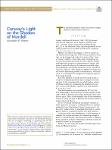Item Infomation
Full metadata record
| DC Field | Value | Language |
|---|---|---|
| dc.contributor.author | Alexander P., Veselov | - |
| dc.date.accessioned | 2023-04-06T03:37:37Z | - |
| dc.date.available | 2023-04-06T03:37:37Z | - |
| dc.date.issued | 2023 | - |
| dc.identifier.uri | https://link.springer.com/article/10.1007/s00283-022-10261-3 | - |
| dc.identifier.uri | https://dlib.phenikaa-uni.edu.vn/handle/PNK/7623 | - |
| dc.description | CC BY | vi |
| dc.description.abstract | Markov introduced his triples in 1879 in relation to the Diophantine properties of the binary quadratic forms that can be interpreted as the description of the “most irrational” numbers. Since then, many surprising connections have been discovered between Markov triples and hyperbolic geometry, combinatorics of words, and, more recently, the theory of Frobenius manifolds, algebraic geometry, and cluster mutations (see [1, 2] and the references therein). This makes the Markovian theme one of the most fascinating stories in mathematics, which because of a still unproven uniqueness conjecture [1] is far from being finished. | vi |
| dc.language.iso | en | vi |
| dc.publisher | Springer | vi |
| dc.subject | Diophantine properties of the binary quadratic forms | vi |
| dc.subject | Frobenius manifolds | vi |
| dc.title | Conway’s Light on the Shadow of Mordell | vi |
| dc.type | Book | vi |
| Appears in Collections | ||
| OER - Khoa học Tự nhiên | ||
Files in This Item:

